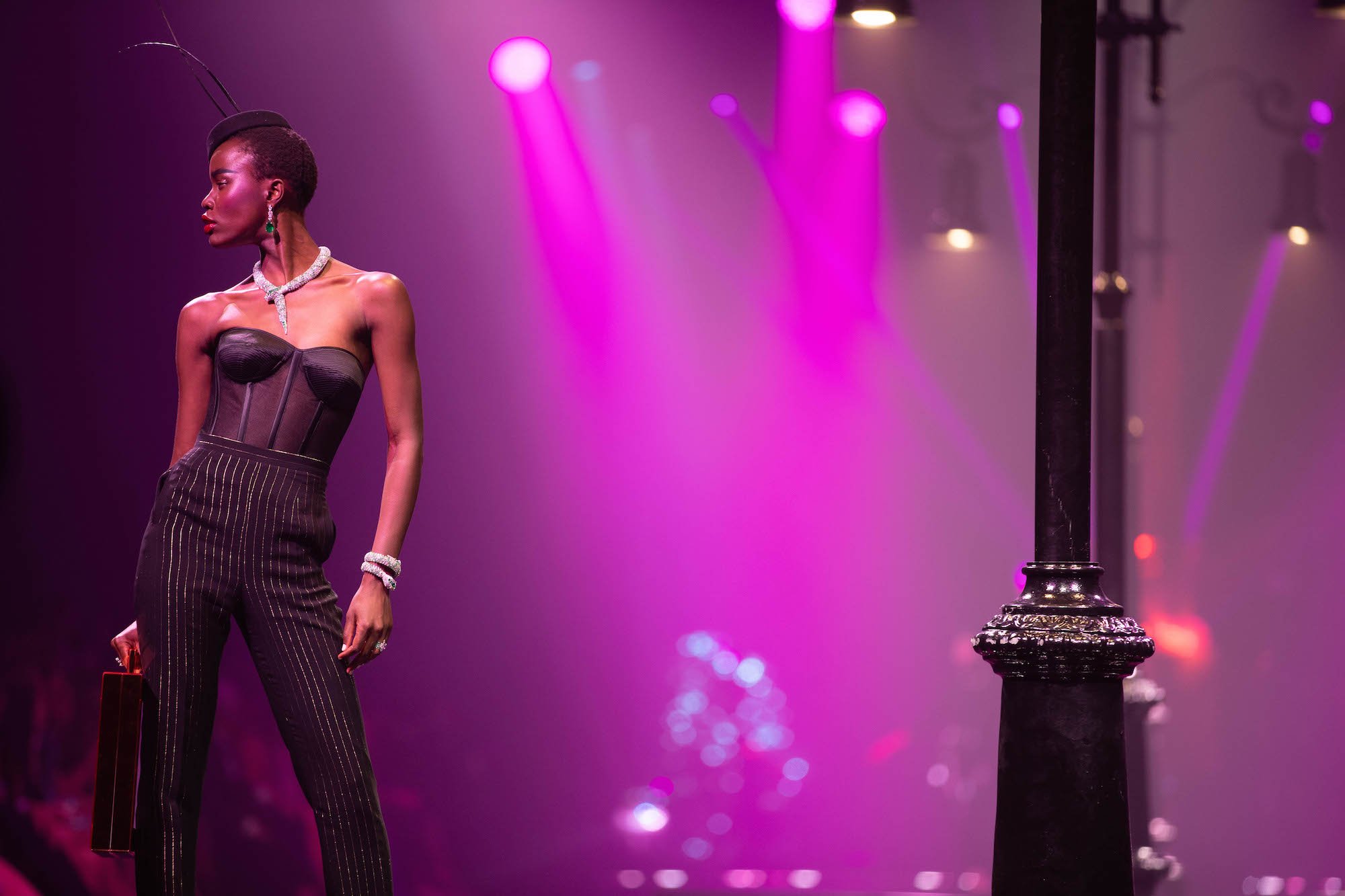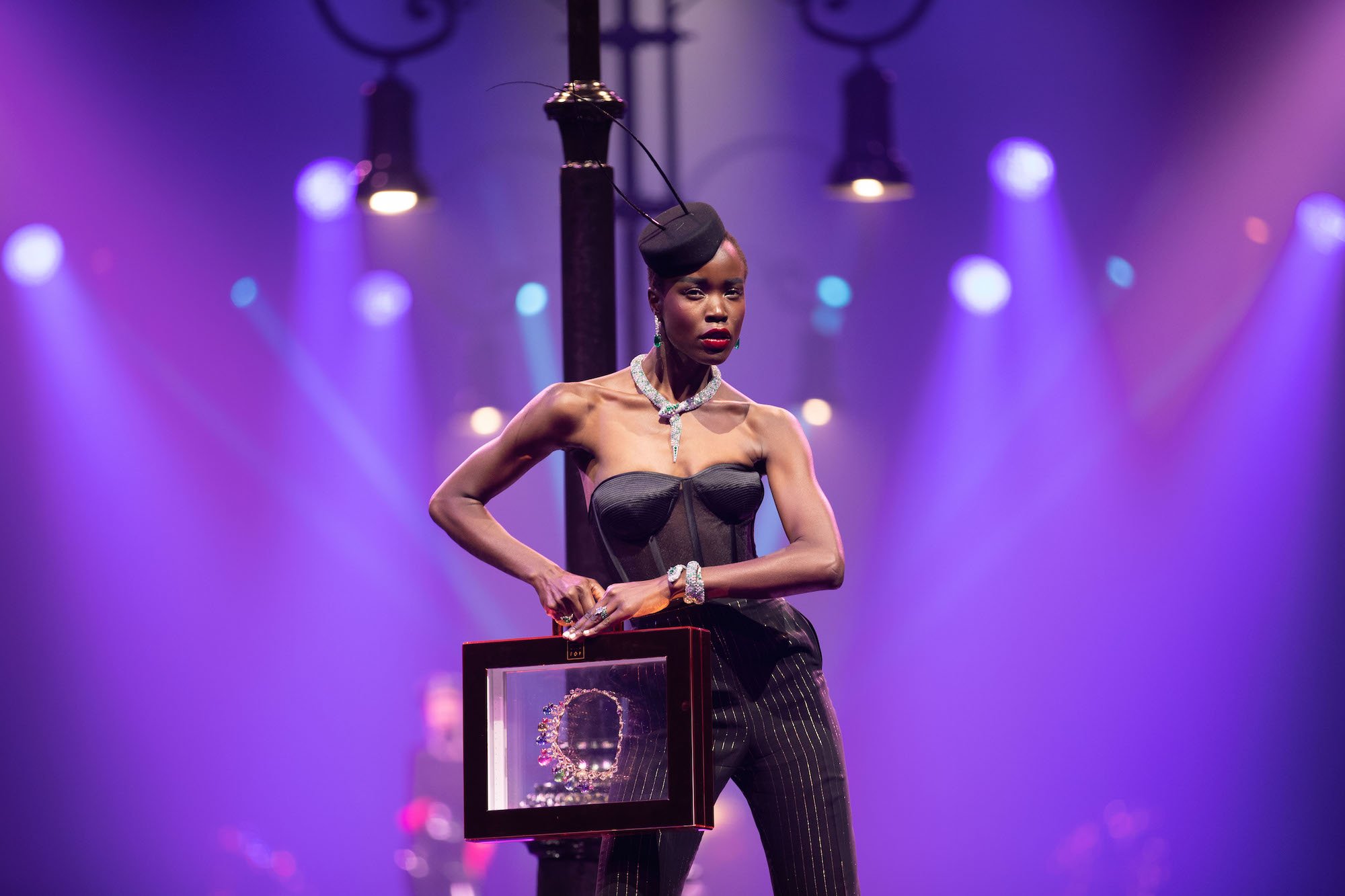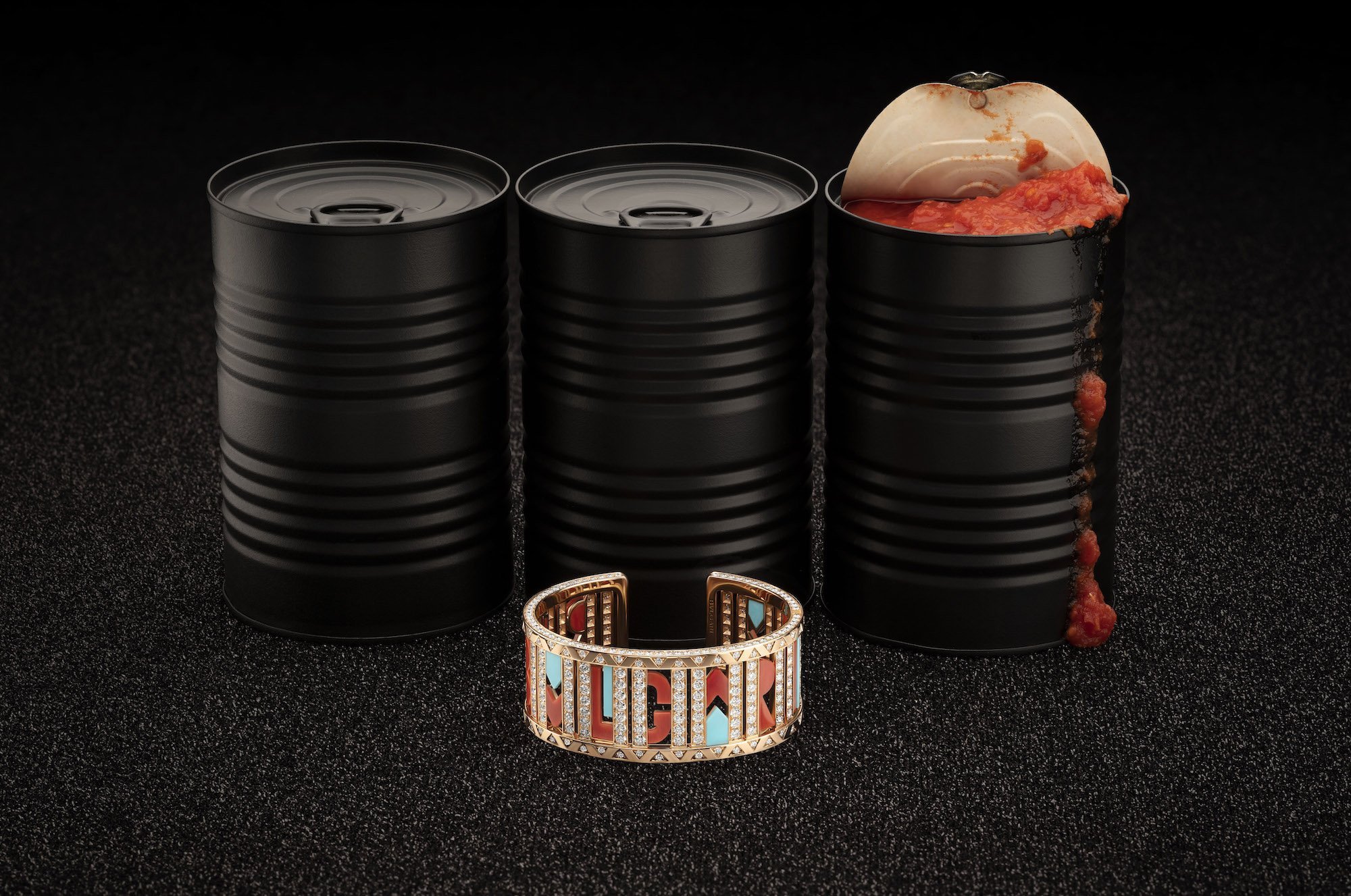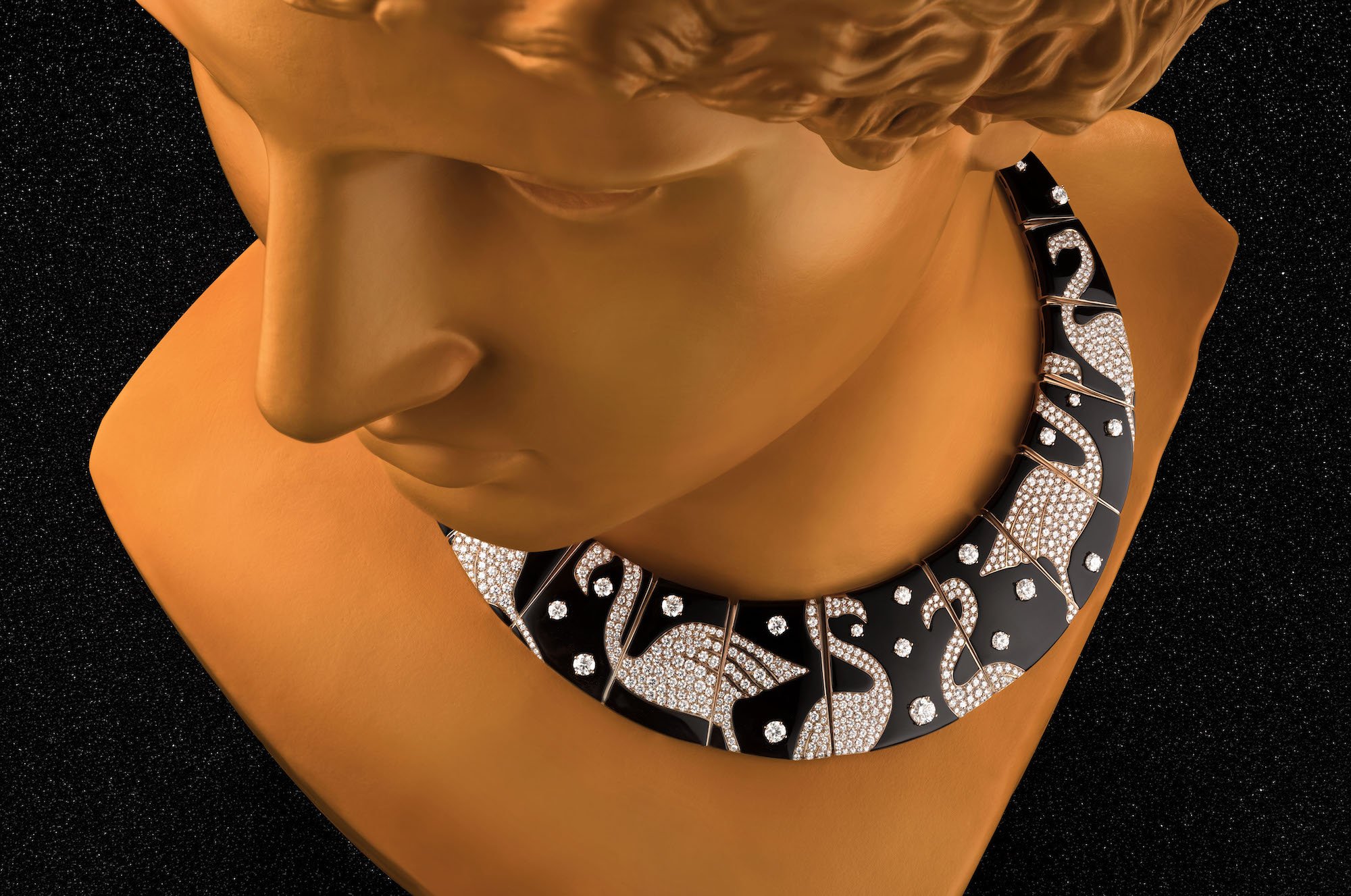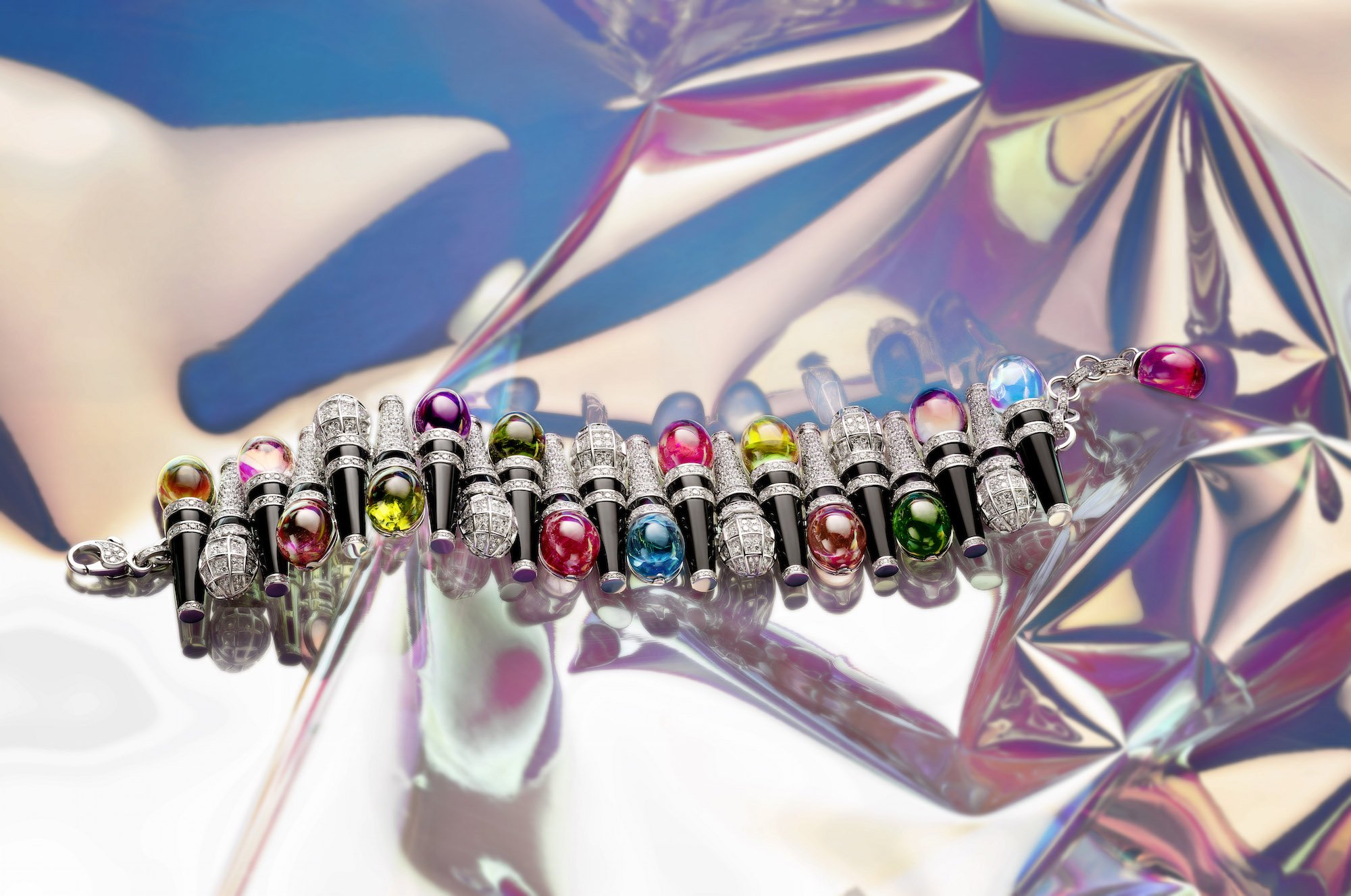ine jewellery and some exclusive timepieces were on display last June in the sumptuous setting of the Villa Farnesina in Rome, built at the beginning of the 16th century for a banker of the Pope and decorated with frescoes by Raphael. In the evening, the supermodel era was recreated in the equally monumental setting of the 1932 Stadio dei Marmi, right next to the Olympic Stadium on the Foro Italico, its 64 colossal Carrara marble statues vibrating to a thumping 1980s soundtrack.
These were unique pieces for the most part, in a “clash of contrasts” reminiscent of what Jeff Koons has done in the past, exhibiting his XXL lobster figurines and inflatable balloons in Versailles (and today, putting the Mona Lisa or Van Gogh on Louis Vuitton’s bags). Classical art is juxtaposed with pop, which thus symbolically becomes a “modern classic”. The 1980s, albeit not as distant as the Renaissance, have already become something of a lost golden age.
Classical art is juxtaposed with pop, which thus symbolically becomes a “modern classic”. The 1980s, albeit not as distant as the Renaissance, have already become something of a lost golden age. The pace is accelerating...

Bulgari has seized upon this classic era for its annual creative theme, entitled “Wild Pop”, against the backdrop of installations by Andy Warhol and performances by Duran Duran. Globalised luxury no longer belongs to one territory or chronology – it evolves beyond space-time, merging, intertwining and mixing eras from which it seeks to extract the aesthetic and spiritual essence, exploding all space-time borders, from Raphael to Duran Duran and from the old Roman city to the new megalopolises of the Chinese hinterland.
The customers, too, as in a game of mirrors, no longer bother with the codes dear to the old bourgeoisie. At a time when everyone wants to be different, and when luxury products have never been copied so much or distributed so widely, a jewellery set costing several thousand francs no longer necessarily looks out of place over a T-shirt worn with jeans and vertiginous heels.
Globalised luxury no longer belongs to one territory – it evolves beyond space-time, merging, intertwining and mixing eras from which it seeks to extract the aesthetic and spiritual essence, exploding all space-time boundaries.
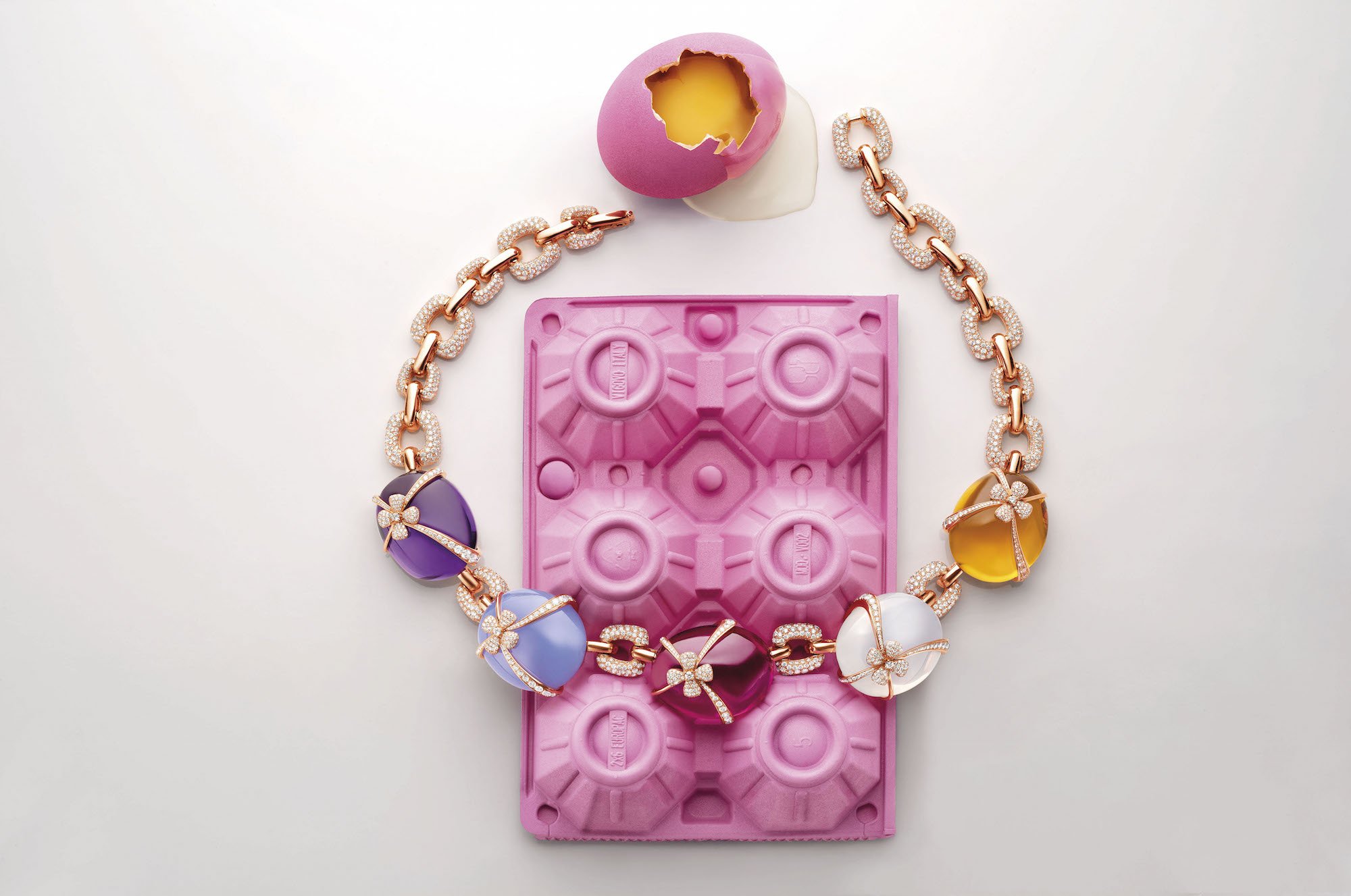
All major luxury brands are trying to identify this phenomenon, torn between the need to evolve in the face of volatile tastes, a growing financial appetite with the extraordinary expansion of the potential customer base (just look at the recent annual reports of groups like LVMH to observe this unprecedented growth*), but also the risk of dilution, losing exclusivity and thus their role as “prescriber”.
At Bulgari, director Jean-Christophe Babin found the right word, in Italian of course, to capture this new world: the quotidianità (which could be translated as “everyday reality”). The milestones of life where one “had to” wear jewellery, from marriage to a child’s first communion, have lost their sacredness in our secular and consumerist societies. People have ceased looking heavenwards, preferring to focus their full attention on themselves.
At Bulgari, director Jean-Christophe Babin found the right word, in Italian of course, to capture this new world: la quotidianità.
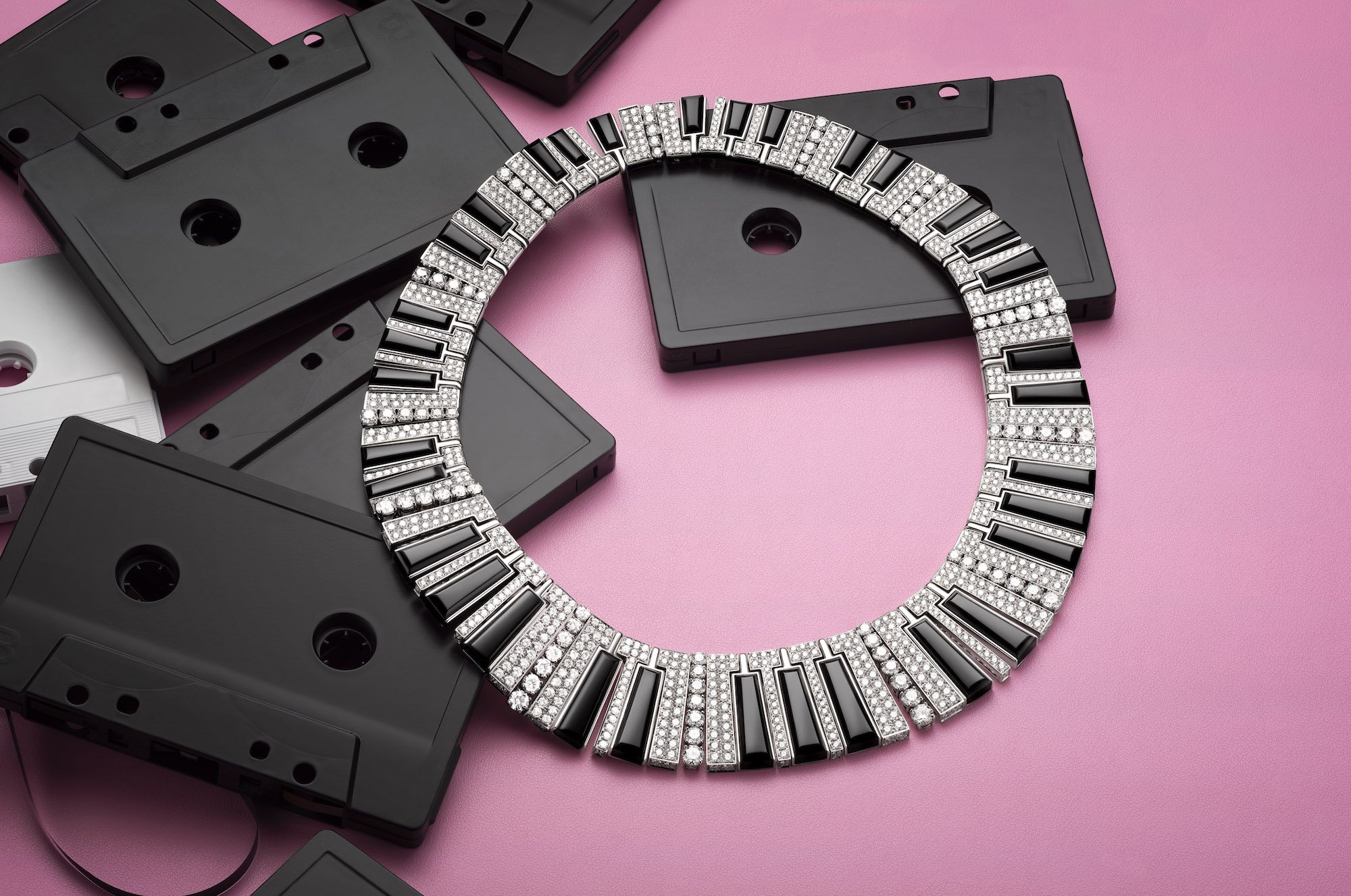
Conversely, through social networks such as Instagram, it is daily life that is now consecrated, with rewards for originality in composition and colour. The selfie that “deifies”... The iconoclasts, who opposed idolatry through images, have lost the battle!
“Today, there is less and less segmentation,” notes Jean-Christophe Babin. “It also gives us more opportunities to express ourselves, more variety of designs, because jewellery is not just for birthday or wedding gifts any more.”
Today, it is daily life that is consecrated. The selfie that “deifies”... The iconoclasts, who opposed idolatry through images, have lost the battle!

Between diva Grace Kelly, a literal and figurative princess of the 1960s, and Bella Hadid, Insta-Beauty Queen of the 2010s, Bulgari clings to the 1980s as an “intermediate” ground of expression in this transcended space-time.
It was a decade where the colours, shapes and conventions of yesteryear were shaken up, but where fashion was still entirely in the hands of brands in a “top-down” hierarchy. Today, luxury houses have to deal with consumers who want to be creative themselves and who, via social networks, probably produce as many images in a day as a brand of the 1980s did in a year.
It is by playing with the versatility of materials that Bulgari intends to make its mark in this new configuration of luxury. Yellow and pink gold, for example, are less formal than white gold or platinum.
The 1980s, when fashion brands could still impose their choices unilaterally...
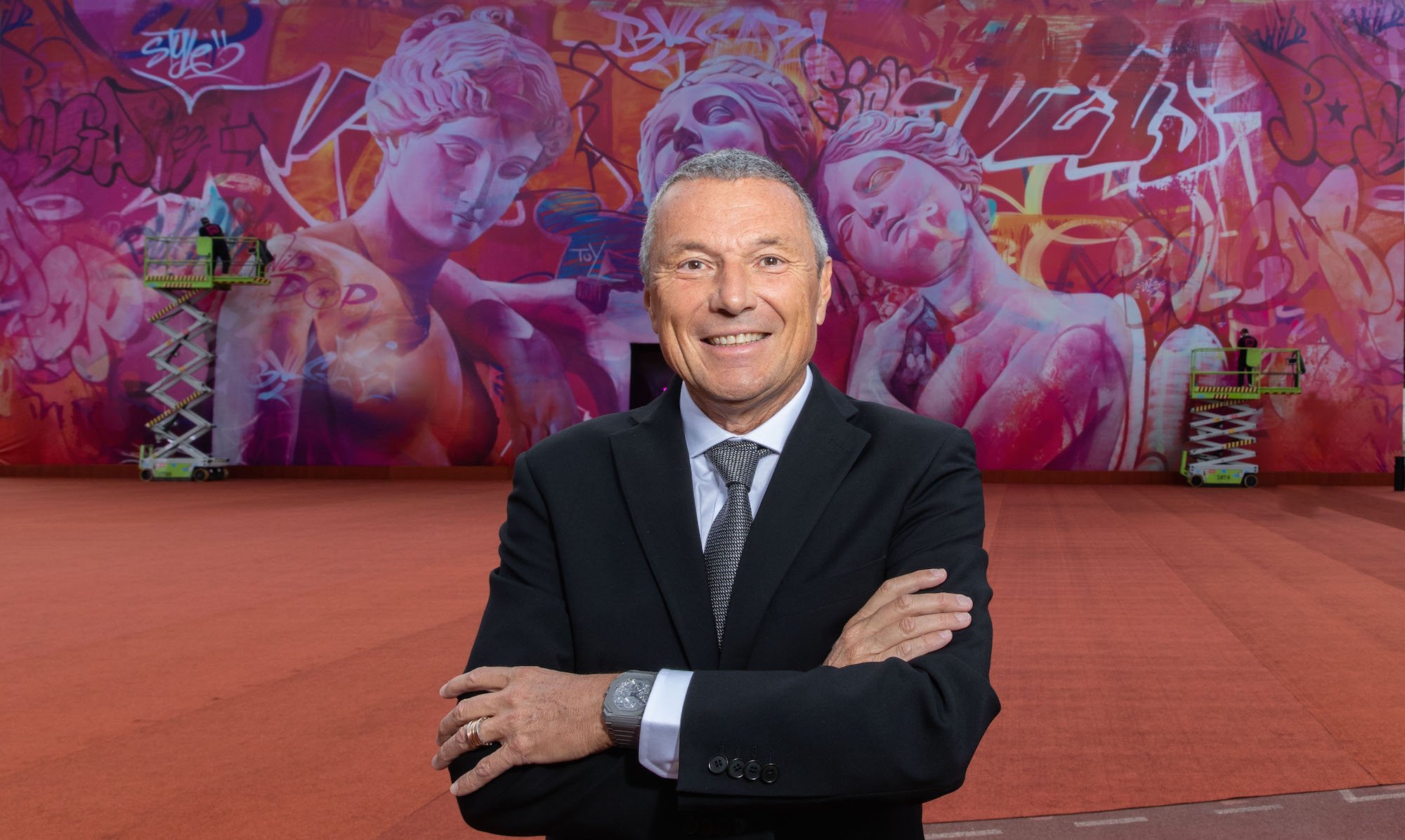
“As early as the 1960s, we insisted on versatility in wearing jewellery,” recalls Jean-Christophe Babin. “Yellow gold means more quotidianità!”
“New generations wear jewellery in a relaxed way,” adds Fabrizio Buonamassa, creative director for Bulgari watchmaking. “It is very important to follow these evolutions, and we always differentiate our products according to the public. For example, the black onyx Serpenti has a more formal side than the new pixellated Serpenti.”
The Roman house, which opened a large jewellery centre in Valenza last year, relies on its craftsmanship for these exceptional pieces with bold shapes, bright colours and rare stones, imprinted with the extravagance of the 1980s. It was definitely not a minimalist decade: these were the years of disco, yuppies and XXL – a world depicted in the movie “The Wolf of Wall Street”. A necklace created by Bulgari reproducing cannabis leaves sets the tone for this high-flying decade.
A necklace created by Bulgari with cannabis leaf motifs sets the tone for the decade.
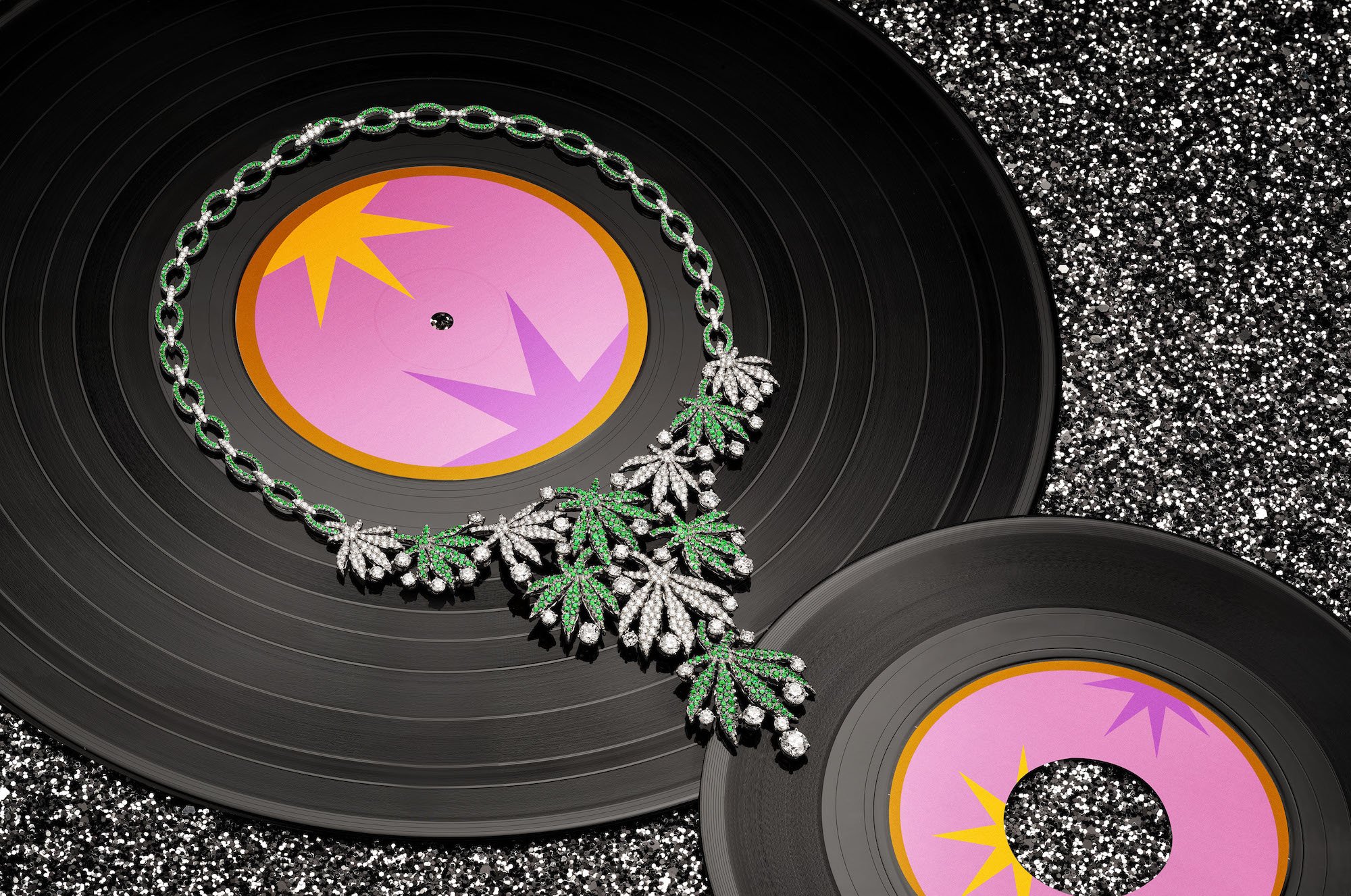
“The Wild Pop theme is very interesting when it comes to exploring all sorts of geometric shapes, colours, combinations and constructions,” says Jean-Christophe Babin. “The 1980s were a hedonistic period.”
As far as watches are concerned, we noted in particular a new Serpenti with “pixellated” structures (perhaps a wink to the pixels that are now omnipresent and invisible?). Bulgari’s favourite animal has the ability to quickly change its skin... “This watch is composed of small gold balls mounted by hand and is inspired by a piece from the 1970s,” says Fabrizio Buonamassa.
The “new technologies” don’t always favour automation; in the 1970s, the balls were soldered, whereas today they are assembled by hand. “It’s animated jewellery, which gives the watch a completely different design.”
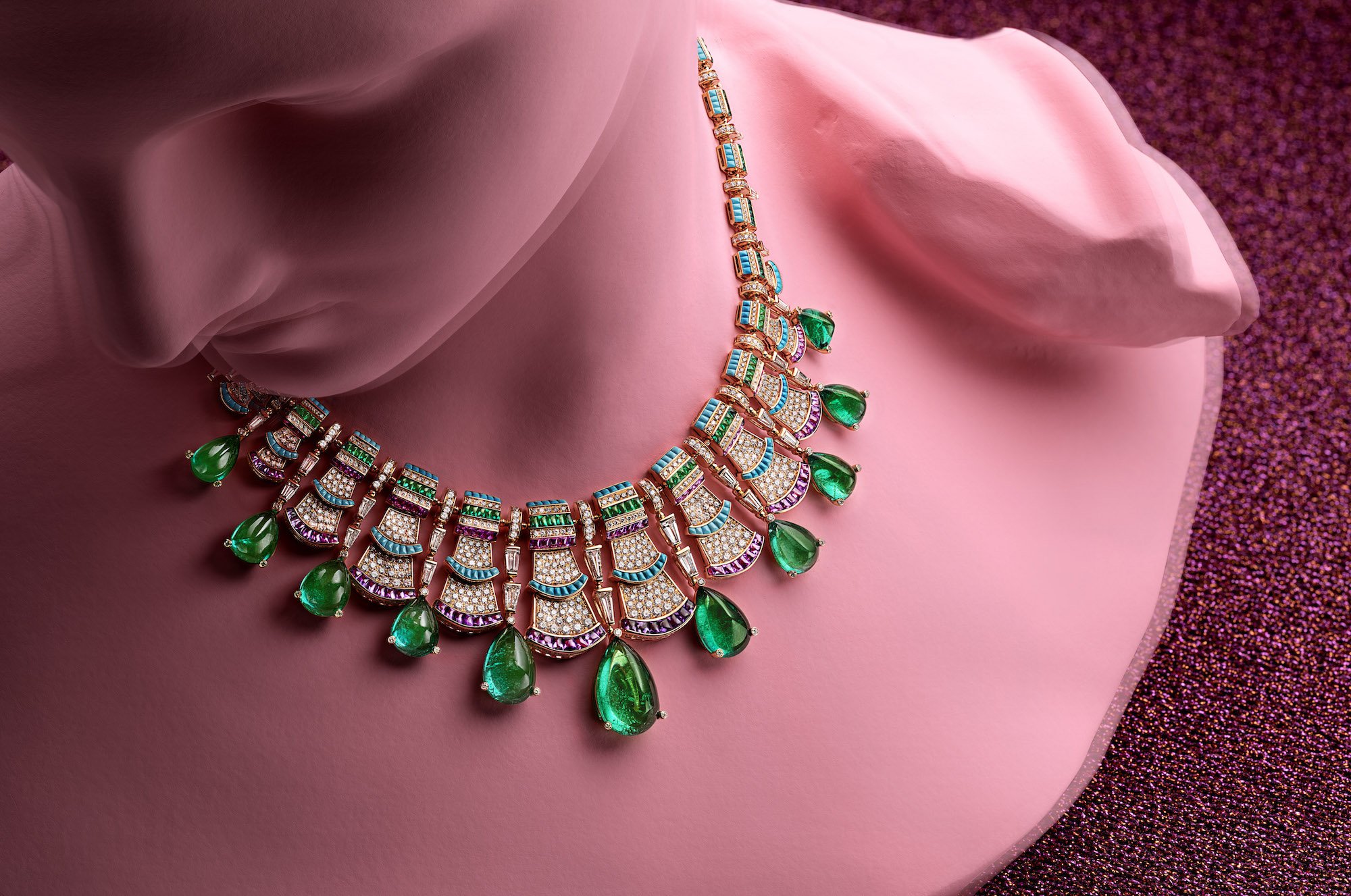
And then, somewhat hidden amid the profusion of high jewellery proposals and a little out of step with the dominant theme, there’s an ultra-technical timepiece that incorporates the greatest number of complications to date for Bulgari, including Grande and Petite Sonnerie! Let’s hope we see it again soon in another context. Because in terms of the House’s watchmaking, this year is more “Finissimo”, futuristic and ultra-flat, than exuberant Wild Pop!
With its chameleon-like ability to look both ahead and behind, while adapting its colours and strategies, always returning in one way or another to its Roman roots, Bulgari carries the jewellery activities of the LVMH group. It’s a sector experiencing rapid growth, while watches still encountered a “difficult market” last year, according to CEO Bernard Arnault, who notes the “excellent year” 2017 achieved by the brand, with “market share gains”.
For Bulgari watchmaking, this year is more “Finissimo”, futuristic and ultra-flat, than exuberant “Wild Pop”!

Although the jewellery market is larger than the watchmaking market in terms of income, there is no monopoly on origin, as is the case with Switzerland for watches. “The jewellery market is developing structurally and it is truly universal: from the beginning of humanity, jewellery and precious stones were revered,” notes Jean-Christophe Babin. “Jewellery has grown in importance as humanity has developed.”
Another important social factor for the development of the House is contemporary nomadism. “If you are born in Geneva, marry in Tokyo and live in New York, the notion of ‘local jeweller’ loses its meaning. In this cosmopolitan environment, global brands like Bulgari become a reference. They build trust. The growth differential is therefore favourable to global brands.”
“If you’re born in Geneva, marry in Tokyo and live in New York, the notion of ‘local jeweller’ loses its meaning.”
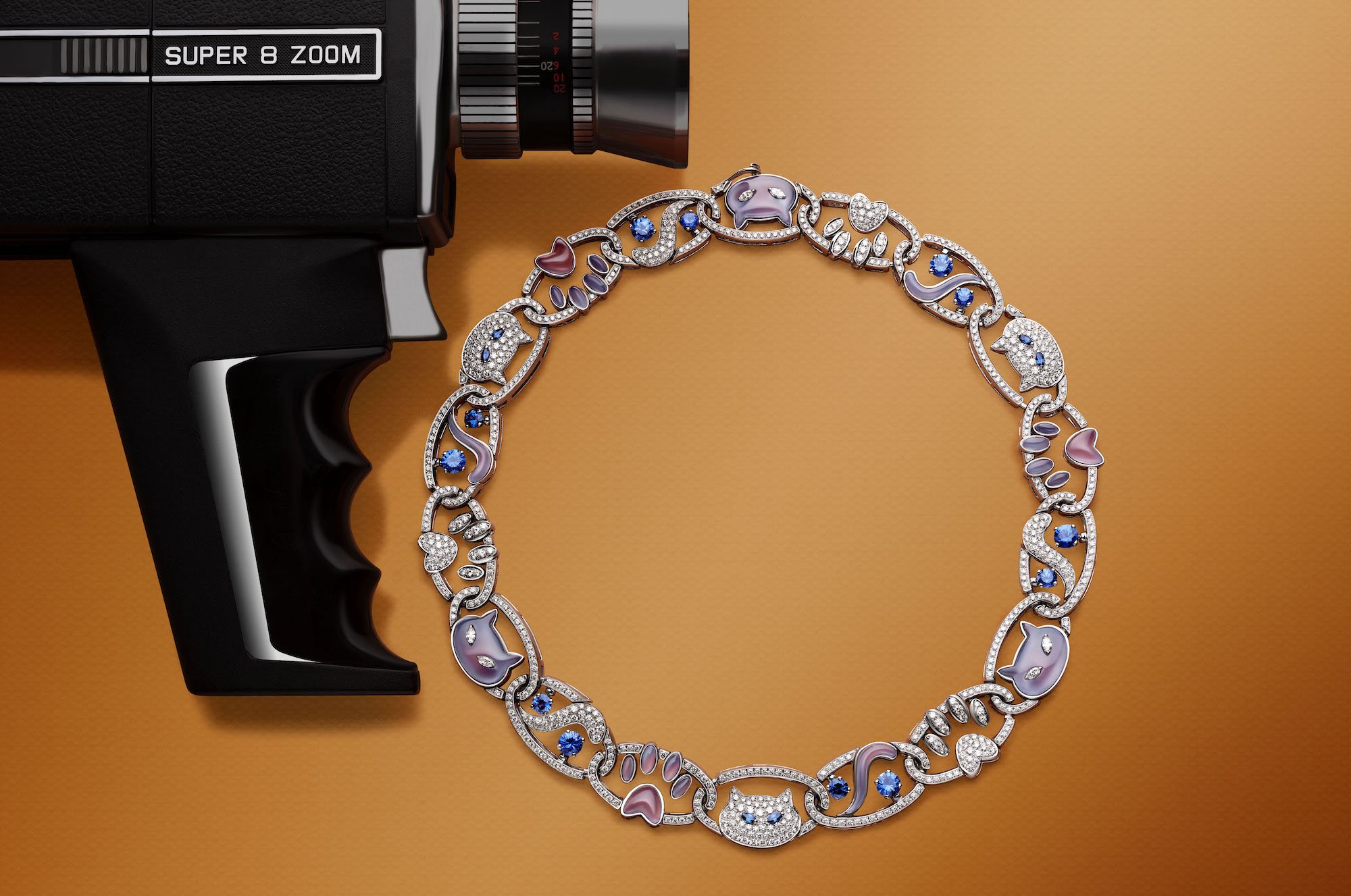
Jewellery, being far less ‘branded’ than watches, has always had a large pre-owned market, which is only now taking off in watchmaking. “Inventory management is very different in jewellery than in watchmaking... because the materials are recoverable. We can even make money, depending on what happens to their market price! As a result, with this guarantee, one can also risk more than in watchmaking on new designs for example.”
Watches are also limited by functionality. And jewellery is turning into a “locomotive” when watchmaking is in decline, whether it is Bulgari at LVMH, Cartier and Van Cleef & Arpels at Richemont, or the world leader in the jewellery sector, Tiffany & Co, which also has a long history in watches. While watchmaking regularly faces threats, from the quartz crisis to the arrival of the connected watch or more generally to the programmed obsolescence of its functions and status, jewellery advances without this sword of Damocles.
Watches are also limited by functionality.
*Growth of major luxury groups’ turnover between 2013 and 2017: LVMH: from 29.1 to 42.6 billion euros; Kering: from 9.7 to 15.5 billion euros; Hermès: from 3.8 to 5.5 billion euros; Watchmaking shows a different picture: Richemont: from 10.1 to 11 billion euros (2012/13–2017/18 deferred financial years); Swatch Group: from 8.5 to 8 billion francs.
